Explore Conservation Ethics
In our recent panel episode of Tech Tutors, How do I use conservation tech ethically?, our presenters explored this important subject as they answered the following questions:
- Doug Clark: How do I use conservation tech ethically?
- Laure Joanny: How do I build on existing tools and procedures to use conservation tech ethically?
- Trishant Simlai: How does conservation tech cause harm?
- Koustubh Sharma: How do I manage ethical issues in the field?
Click each presenter's name to view the recording from their individual lecture portion of the panel.
Louis Cohen also created a conservation tech ethics beginner's guide for Tech Tutors participants, available for download here.
And in addition to the many engaging resources shared by participants during this episode, our presenters also provided several papers and other resources to help you explore the many aspects of conservation technology ethics:
- Research Paper (Doug Clark, Chris Sandbrook, Trishant Simlai): Principles for the socially responsible use of conservation monitoring technology and data
- Research Paper (Koustubh Sharma): Conservation and people: Towards an ethical code of conduct for the use of camera traps in wildlife research
- Keynote Presentation (Trishant Simlai): Conservation surveillance as a means for state repression? Psychological terror and the spectacles of fear through the use of drones in India
- The First Nations Principles of OCAP
- Doug Clark: Engaging Northern expertise strengthens ecological science
- Research Paper (Chris Sandbrook): The social implications of using drones for biodiversity conservation
If you're interested in discussing the ethics of conservation technology, you can join the WILDLABS forum dedicated to ethics, and connect with these panelists in this episode's Tech Tutors thread!
- @hmanning
- | they/them
- 0 Resources
- 0 Discussions
- 3 Groups
- @erinconnolly
- | She/her
University College London (UCL)
PhD Student at UCL's People and Nature Lab. Studying human-livestock-wildlife coexistence in the Greater Maasai Mara Ecosystem, Kenya.
- 0 Resources
- 0 Discussions
- 8 Groups
- @a.zubiria
- | she/her
- 0 Resources
- 2 Discussions
- 11 Groups
Chief Marketing Officer 🌎 Building Transparency through Data & Storytelling

- 2 Resources
- 3 Discussions
- 8 Groups
Aeracoop & Dronecoria
Computer engineer, Drone Pilot, Seed researcher, Wild Tech Maker





- 3 Resources
- 37 Discussions
- 11 Groups
- @meredithspalmer
- | she/her
Yale University
Conservation, Innovation, Education



- 8 Resources
- 27 Discussions
- 9 Groups
- @Bistra_Dilkina
- | she/her
Assoc. Prof. of Computer Science at USC and co-director of USC Center for AI in Society. Integration of machine learning and optimization, decision making, conservation planning, wildlife corridors, climate impacts, disaster resilience, wildlife trafficking.
- 0 Resources
- 0 Discussions
- 6 Groups
- @Durgananda
- | He
- 0 Resources
- 0 Discussions
- 20 Groups
Tech for Conservation

- 0 Resources
- 2 Discussions
- 13 Groups
Wildlife Conservation Society (WCS)
I am a devoted conservationist, natural resource management enthusiast interested in Elephant and Pangolin species and passionate about linking communities with environmental conservation

- 1 Resources
- 0 Discussions
- 13 Groups
Technical Specialist at FFI: loves data management, maps, remote sensing & GIS for conservation

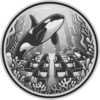
- 2 Resources
- 2 Discussions
- 9 Groups
- @rowan
- | they / them
Octophin Digital
Jack of all Trades. I've been a zoo keeper, a conservation geneticist and a web developer who specialises in conservation projects and orgs.


- 1 Resources
- 5 Discussions
- 15 Groups
Come and do the first research into responsible AI for biodiversity monitoring, developing ways to ensure these AIs are safe, unbiased and accountable.
11 June 2024
WildLabs will soon launch a 'Funding and Finance' group. What would be your wish list for such a group? Would you be interested in co-managing or otherwise helping out?
5 June 2024
Listen in on our interview with human-predator conflict expert, Gabi Fleury and gain a deeper understanding of the importance of holistic, ethical and community-led approaches to developing tech solutions for...
8 December 2023
Made available by the Digital Disruption and the Future of Conservation project team at Unearthodox, the toolkit provides conservation practitioners with a comprehensive introduction to Web 3.0 and AI concepts and their...
22 September 2023
The program’s third cohort will provide $300,000 to artificial intelligence projects making a positive impact in ecosystems and human communities.
15 September 2023
In this article, Sol Milne discusses his experiences with sustainability, both in terms of environmental impact and project longevity, and considers how uncoupling conservation work from colonial ideas can help us build...
9 August 2023
Published in Frontiers in Veterinary Science
1 March 2023
Article
Meet the women and men supporting gender equality in conservation #tech. Here is a panel discussion the Women in Conservation Tech (WiCT) led in November 2022, during the EarthRanger User Conference (ERUC). Opening up...
30 January 2023
This article examines the politics of emerging partnerships among big-tech corporations, big international non-governmental organisations (BINGOs) and bilaterals that promote the uptake and implementation of ‘smart...
13 January 2023
The series will focus on how AI is being used to support conservation efforts. The series will discuss the past, present and future of how these technologies advance sustainability, with a focus on the future, and an...
11 October 2022
Article
Ceres Tag sends just in time alerts and GPS location to have the power to track and trace.
22 July 2022
"A drone emitting orca sounds will be used in attempt to guide the animal, whose health is fast deteriorating"
1 June 2022
July 2025
September 2024
event
March 2024
| Description | Activity | Replies | Groups | Updated |
|---|---|---|---|---|
| Thanks for kicking off this thread Paola!You might be interested in this paper by Chris Sandbrook et al |
|
Ethics of Conservation Tech | 10 months 2 weeks ago | |
| Fantastic!! |
|
Acoustics, AI for Conservation, Animal Movement, Build Your Own Data Logger Community, Community Base, Early Career, Ethics of Conservation Tech, Marine Conservation, Open Source Solutions | 11 months 2 weeks ago | |
| Hi Luciano,Thank you for joining in in the discussion!I really love your perspectives on this. It is exciting to learn that I am not all alone in this. You know, at one point you... |
|
Ethics of Conservation Tech | 1 year 1 month ago | |
| Hi everyone! My name is Leah Govia and I am a PhD candidate at the University of Guelph, Canada. My research explores what people... |
|
Ethics of Conservation Tech, Conservation Tech Training and Education, AI for Conservation | 1 year 3 months ago | |
| Fire detection is a sort of broad idea. Usually people detect the products of fire, and most often this is smoke.Many home fire detectors in the US use a radioactive source... |
|
Community Base, Conservation Tech Training and Education, Data management and processing tools, Ethics of Conservation Tech, Human-Wildlife Conflict, Open Source Solutions, Protected Area Management Tools, Sensors, Wildlife Crime | 1 year 4 months ago | |
| Hi folks! Happy 2024 and thanks in advance for your patience in case I over-used tags. If you’re using any form of natural language... |
|
AI for Conservation, Citizen Science, Climate Change, Conservation Tech Training and Education, Data management and processing tools, Early Career, East Africa Community, Emerging Tech, Ending Wildlife Trafficking Online, Ethics of Conservation Tech, Human-Wildlife Conflict, Open Source Solutions, Software Development, Wildlife Crime, Women in Conservation Tech Programme (WiCT) | 1 year 4 months ago | |
| Thank you Stefan! Will follow up with your email shortly. |
|
Acoustics, Emerging Tech, Ethics of Conservation Tech | 1 year 5 months ago | |
| Hi Emma, In your new project, if you have interest in a direct to satellite platform perspective, you can contact me on info@cerestag.com Would be interested to see your outcomes... |
|
Emerging Tech, Ethics of Conservation Tech | 1 year 7 months ago | |
| Hello all! Bluspark is a plateform that allows natural area managers such as natural parks or reserves to optimize their day to day... |
|
Citizen Science, Community Base, Connectivity, Conservation Tech Training and Education, Ethics of Conservation Tech, Protected Area Management Tools, Software Development | 2 years ago | |
| I just came across this interesting paper in which seismic monotoring of animals like elephants was mentioned. This is the study refered to:Cheers,Lars |
|
AI for Conservation, Camera Traps, Emerging Tech, Ethics of Conservation Tech, Human-Wildlife Conflict, Geospatial, Sensors | 2 years 5 months ago | |
| Hi all, one of the 8 MozFest 2023 spaces is 'Tech & Biodiversity', and the organisers seek input for an event on the intersection of... |
|
AI for Conservation, Ethics of Conservation Tech, Open Source Solutions | 2 years 6 months ago | |
| Fwiw, GBIF published guidance on this topic late last year: Chapman AD (2020) Current Best Practices for Generalizing Sensitive Species Occurrence Data. Copenhagen: GBIF... |
+1
|
Ethics of Conservation Tech | 3 years 8 months ago |
Digital Disruption for Conservation Toolkit
22 September 2023 12:18pm
Mozilla Technology Fund: AI and Environmental Justice Awards
15 September 2023 12:09pm
Sustained Effort: Carbon Footprints and Capacity
9 August 2023 10:00am
The Wildlife Society Conference
19 June 2023 5:59am
Bluspark - Integrated management platefmorm for protected areas
28 April 2023 9:28pm
Gender Equality in Conservation
30 January 2023 10:27am
New paper - Automating violence? The anti-politics of ‘smart technology’ in biodiversity conservation
13 January 2023 12:13am
Help - Innovative ways to track elephant movement
28 October 2022 4:50pm
7 November 2022 12:52am
Hi Tyler,
Would like to introduce you to Ceres Tags products
- Ceres Tags products come in boxes of 5, 10 and 24.
- There are some software partners such as Earthranger, Mapipedia and possibly CiboLabs that would be able to assist you with your mapping vegetation requirements
- Ceres Tag does not require any towers, base stations and infrastructure. This allows you to see any movements from the heard outside of their normal herd (boundary alerts), and you will not be disturbing any of the flora and fauna with infrastructure set up.
- For the timing you are looking at, Ceres Wild pings directly to satellite 24 times a day. For Ceres Trace and Ceres Ranch there are 4 within 24 hours. Taking into consideration, when you set up alert areas, you will get them directly to your phone/laptop via your software of choice
- Ceres Ranch is a reusable tag that has just been launched. Use it on this project, remove the tag and then use the tag on your next project
- The software you choose will assist with the history of your animal movements. Ceres Tag is integrated with 11 software partners and in-development with 18 software partners https://cerestag.com/pages/software-partners
- Understanding it is a short-term project, you would be able to use Ceres Tags products without the additional expense of setting up and removing infrastructure- towers, gateways
- With Ceres Tag, you are purchasing the box of tags and picking a suitable software to deliver the information you require. On average, a box of 10 Ceres Trace Tags, is the same as 1 LoRaWAN tower.
14 December 2022 10:49am
I just came across this interesting paper in which seismic monotoring of animals like elephants was mentioned.
This is the study refered to:
Cheers,
Lars
MozFest 2023 call for proposals on Tech & Biodiversity
22 November 2022 11:10am
Upcoming WWF Webinar Series: Artificial Intelligence and Conservation
11 October 2022 12:30pm
Artificial Intelligence and Conservation: Ethics
11 October 2022 12:28pm
Frontiers Symposium: Digital tools for reversing environmental degradation
5 October 2022 10:23am
CERES TAG
22 July 2022 3:36am
TAI4ES: Trustworthy Artificial Intelligence for Environmental Science, 2022 summer school
4 June 2022 11:31am
New article (Reuters): Orca stuck in river to be lured to sea using drone with loudspeakers
1 June 2022 4:02pm
UKAN+ Monitoring UK Biodiversity Symposium 15-16th June
31 May 2022 2:58pm
Data privacy for at-risk species
6 August 2021 5:38am
27 August 2021 3:49pm
If you haven't read them, these 2 papers offer propose decision-making frameworks for sensitive animal occurrence data:
Tulloch AIT, Auerbach N, Avery-Gomm S, Bayraktarov E, Butt N, Dickman CR, Ehmke G, Fisher DO, Grantham H, Holden MH, et al. 2018. A decision tree for assessing the risks and benefits of publishing biodiversity data. Nature Ecol. Evol. 2: 1209-1217. https://doi.org/10.1038/s41559-018-0608-1
Lennox RJ, Harcourt R, Bennett JR, Davies A, Ford AT, Frey RM, Hayward MW, Hussey NE, Iverson SJ, Kays R. 2020. A novel framework to protect animal data in a world of ecosurveillance. BioScience 70(6): 468–476. https://doi.org/10.1093/biosci/biaa035
The Research Data Alliance has 2 relevant interest groups:
Sensitive Data IG: This is just getting started.
Data Policy Standardization and Implementation IG: For those publishing results, this group is working on advising more consistent data-access policies. In the paper below resulting from this group's work, they give some general suggestions for defining exceptions to open data policies that include sensitive species data:
Hrynaszkiewicz I, Simons N, Hussain A, Grant R, Goudie S. 2020. Developing a research data policy framework for all journals and publishers. Data Science Journal 19(1): 5. http://doi.org/10.5334/dsj-2020-005
If others know of relevant resources please share!
10 September 2021 5:42pm
Our team was just talking about this as well. We work in bioacoustics, so not as complex as the camera trap strategies described in the publication.
Strategy we landed on was to automatically round geo coordinates to map an approx location for species presence.
We welcome thoughts/opinions/ideas on this important topic for our sensitive species in Nepal, Bolivia, and US!
14 September 2021 10:50am
Fwiw, GBIF published guidance on this topic late last year:
Chapman AD (2020) Current Best Practices for Generalizing Sensitive Species Occurrence Data. Copenhagen: GBIF Secretariat. https://doi.org/10.15468/doc-5jp4-5g10.
Tech Tutors: How do I use tech ethically?
5 August 2021 3:28pm
How do I use conservation tech ethically?
 Laure Joanny
and 3 more
Laure Joanny
and 3 more
26 July 2021 12:00am
Seeking feedback: draft principles for responsible use of conservation surveillance technology
4 June 2020 6:38pm
25 November 2020 5:08pm
Hi Kate, Apologies for the delay responding. We submitted this work to Conservation Science and Practice on July 12 and we are currently working on the revisions. We hope it will be out soon. Stay well!
17 February 2021 11:59pm
Hi Doug - What's the status of this paper? I have anothe rproject looking at conservation AI principles and would like to point ot this paper, if it's out. - Kate
18 February 2021 7:54pm
Hi Kate- it should be out imminently and we'll announce it here when it is. Meantime I'll email you a copy. cheers, Doug.
Tech Tutors: How do I build a community-owned conservation tech research project?
6 January 2021 4:57pm
Guidelines for reducing disturbance to wildlife when using drones
6 March 2020 3:00pm
8 June 2020 6:11pm
this paper is a good place to start: Hodgson, J. C., & Koh, L. P. (2016). Best practice for minimising unmanned aerial vehicle disturbance to wildlife in biological field research. Current Biology, 26(10), R404-R405.
Responsible Data concerns
8 February 2019 3:16pm
Open source vs intellectual property
23 November 2016 2:17pm
Building tech solutions from the ground up
30 November 2015 11:00am
30 November 2015 12:27pm
Thanks for contributing these thoughts and resources, Ken. Great to see you in the WILDLABS.NET community!
Live Event: Centre for Global Equality Seminar about drones and conservation
25 November 2015 12:44pm

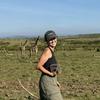

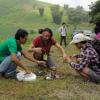


















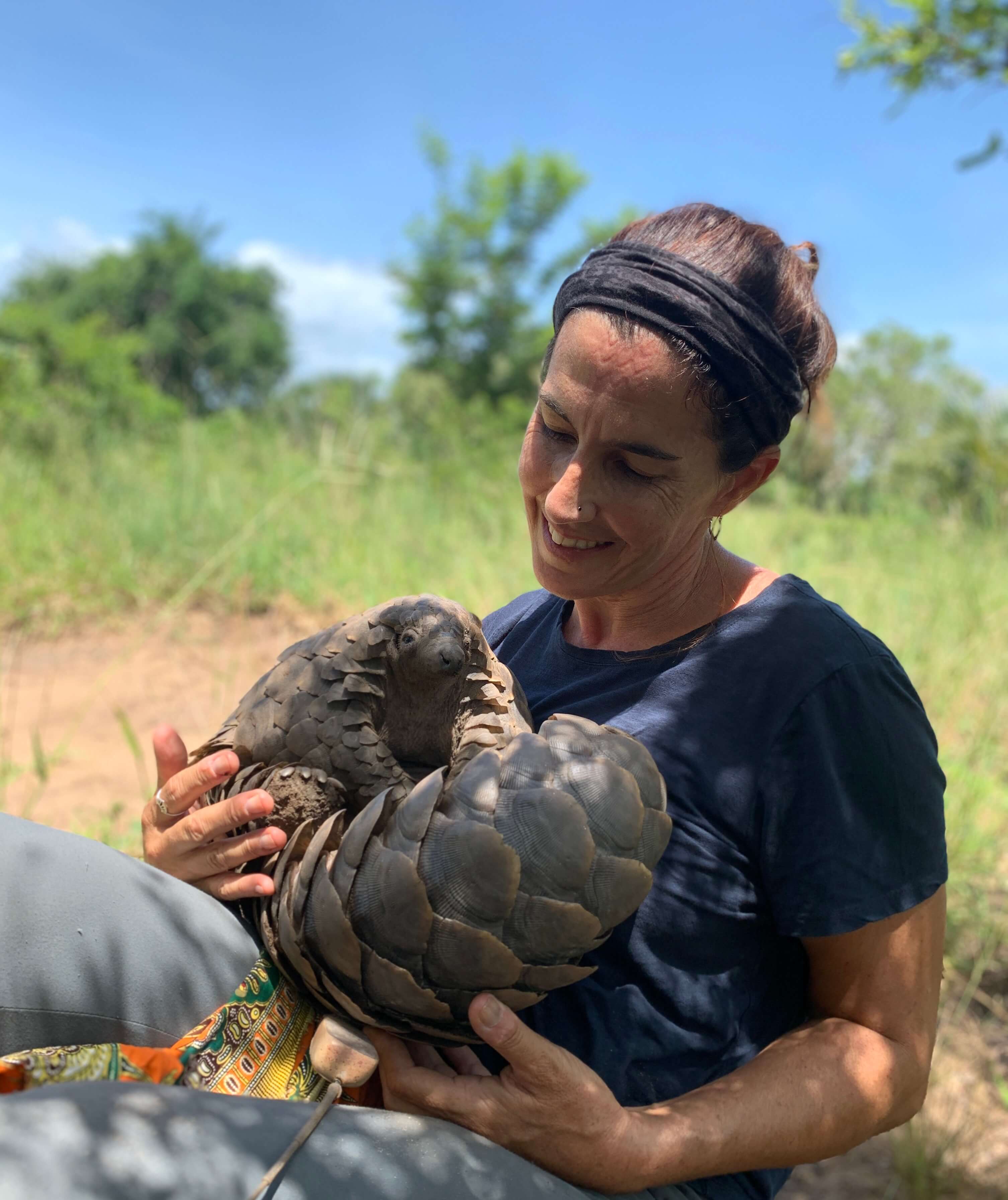





















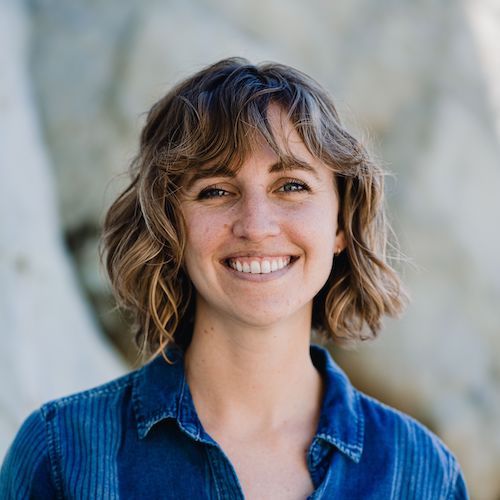







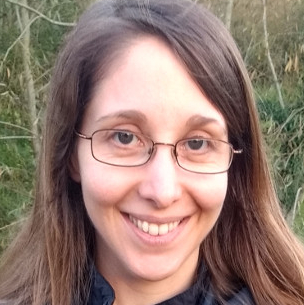












4 November 2022 5:24pm
Why would you want to avoid alerting the rangers ?
You don't need high tech for this; elephants leave very obvious tracks and sign.